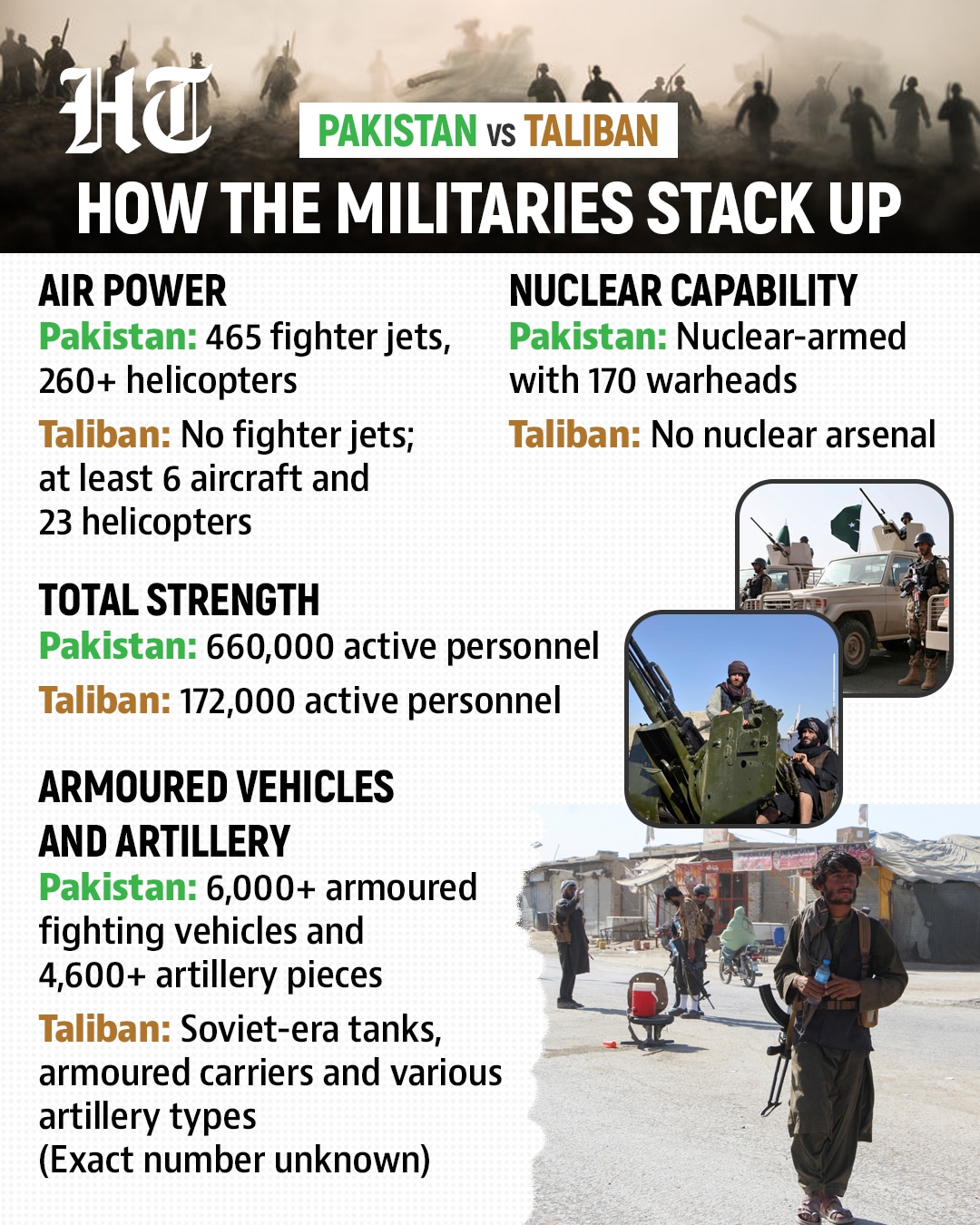Pakistan-Afghanistan's conflict dates back to British Raj in India | A brief history of the rivalry
While the recent conflict between Pakistan-Afghanistan is the deadliest since the 2021 Taliban takeover, the conflict actually dates back to the British Raj.
Amid the escalating tensions between Pakistan and Afghanistan following the deadly border clashes, both countries have agreed to a 48-hour ceasefire. This truce brings a temporary halt to the growing hostilities between the two countries along the Durand Line.

As per Pakistani military, around 15 to 20 Taliban militants were killed in the Spin Boldak border districts. Furthermore, a Taliban spokesman said at least 12 civilians had been killed and more than 100 wounded by Pakistani firing.
As both sides claim the other suffered heavy casualties, none of the death tolls could be independently confirmed.
Pakistan-Afghanistan agree to ceasefire
Since the resurgence of Taliban rule in Afghanistan, Pakistan has claimed several terrorist attacks against it by the faction group - TTP, many of which, the military says have come from Afghan soil.
With the surge in militant attacks and border clashes, the situation quickly deteriorated between Islamabad and Kabul, prompting Arab nations such as Qatar and Saudi Arabia to intervene.
On Wednesday, Pakistan and Afghanistan agreed to a two day ceasefire, allegedly brokered by Doha and Riyadh. However, no official statement from the two Gulf nations has been made regarding their intervention in the conflict.
While the recent conflict between Pakistan and Afghanistan escalated following the return of the Taliban in Kabul and the resurgence of Tehreek-i-Taliban Pakistan (TTP), the conflict between the two nations dates back to the British Raj in India.
From partition with India to resurgence of Taliban: A brief history of Pakistan-Afghanistan's rivalry
The conflict between the two nations dates back to the British Raj in India, before the creation of Pakistan. The conflict between the two nations mainly stems from the Durand Line, which is the international border between Pakistan and Afghanistan.
This line was established in 1893 as the border between the Emirate of Afghanistan and the British Indian Empire. This border agreement was inherited by Pakistan in 1947, after its partition with India.
Furthermore, hostilities between the two neighbouring regions increased after Afghanistan became the only country to vote against Pakistan's admission to the United Nations.
Known as one of the most dangerous borders in the world, the Durand Line demarcates Khyber Pakhtunkhwa and Balochistan in Pakistan which Afghanistan claims territorial sovereignty over, and the contested region of Gilgit-Baltistan, which is claimed by Pakistan, Afghanistan and India.
This border area is also notorious for having little to zero government control, making it a hub for smuggling of weapons, narcotics, kidnappings, murder and other illegal activities.
Taliban's Pakistani faction, the TTP, often operates from near the border to target Pakistani security personnel deployed along the Durand Line.
Another key problem area for these two nations is the recognition of the border. While Pakistan and the international community recognise the Durand Line as the official border between the two states, Afghanistan does not.
Also Read | Pakistani soldiers' pants paraded in Afghanistan by Taliban, picture goes viral
For decades, both Pakistan and Afghan forces have clashed over border posts and the conflict escalated to the deadliest confrontation between the two nations since the Taliban's takeover in 2021.

Apart from conflict dating back to the British Raj in India, the Pakistani government has also accused India of enabling militant groups in Afghanistan to move against Pakistan.
In the most recent incident, Pakistan's defence minister Khawaja Asif accused India of sponsoring the moves of the Taliban and accused the extremist group of "fighting a proxy war" on behalf of New Delhi.
Will the ceasefire hold?
With a ceasefire for just two days, many have doubted the longevity of the truce between Islamabad and Kabul. Furthermore, Pakistan government officials, such as Khawaja Asif have also expressed their doubts regarding the ceasefire.
"I have my doubts that the ceasefire will hold, because the decisions of the [Afghan] Taliban are being sponsored by Delhi," Asif told Geo News.
In addition to the doubts, moments before the ceasefire came into effect at 6 PM Islamabad time, Pakistan reportedly carried out fresh strikes.
AFP reporters reported plumes of black smoke rising above Kabul on Wednesday evening, after which, the truce came into effect.
In its official statement, the Pakistani foreign affairs ministry stated that during this truce, both sides will work to find a "positive solution" through dialogue.
Afghanistan's Taliban government has also stated it will respect the truce "unless it is violated" by the opposing side.
How does the Pak military hold against Taliban?
Pakistan has a total of 660,000 active personnel in the defence forces, of which 560,000 are in the army, 70,000 are in the air force, and 30,000 are in the navy.
In comparison to this, the Taliban is said to have less hands. As per the London-based International Institute for Strategic Studies, Afghan Taliban's military has only 172,000 active personnel.

Furthermore, Pakistan also has 6,000 armoured fighting vehicles, over 4,600 pieces of artillery and nuclear weapons.
Taliban on the other hand, does not have an air force or fighter jets. However, the extremist group is said to possess six aircraft - some of which date back to the Soveit take over the country in 1979 and 23 helicopters, whose flying conditions remain unknown.





